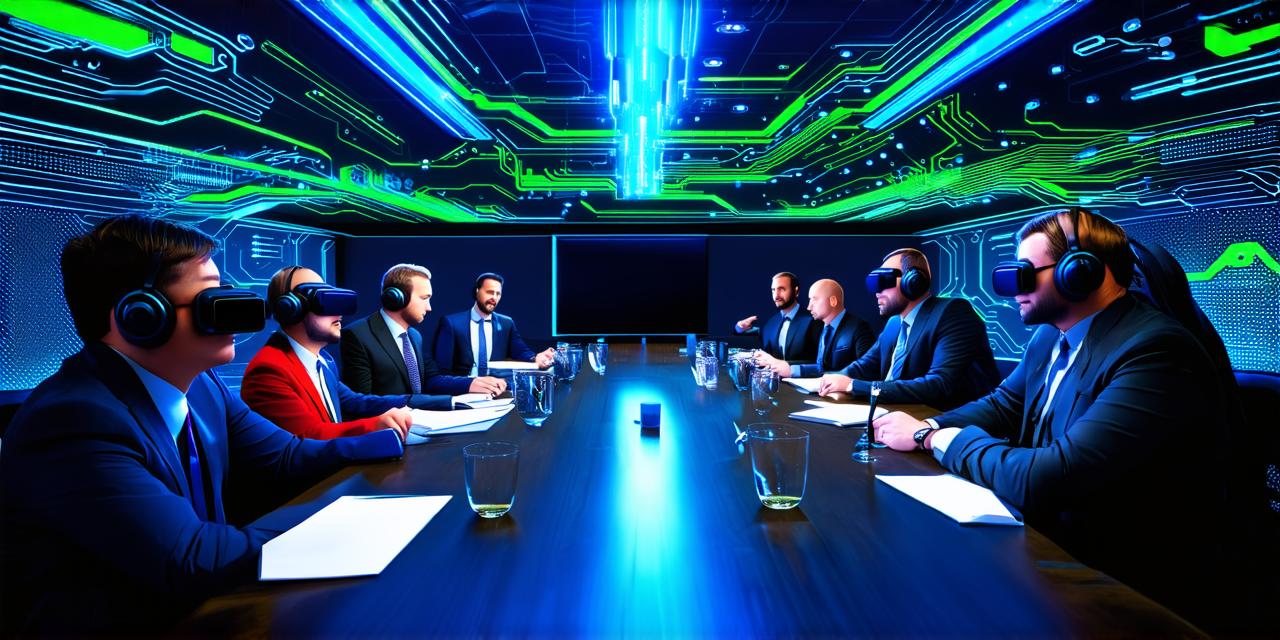Virtual reality (VR) is an immersive computer-generated simulation of a 3D environment that can be interacted with and explored by a person using specialized electronic equipment, such as a headset or gloves equipped with sensors. VR technology has been around for decades, but it has only recently become accessible to the general public.
Virtual reality (VR) can be a useful tool for conducting meetings in a variety of ways. Here are a few reasons why:
-
Enhanced Collaboration: VR allows participants to collaborate in a virtual environment, which can facilitate better communication and understanding between team members. In a VR meeting, participants can interact with each other in real-time, allowing for more effective brainstorming and problem-solving.
-
Increased Engagement: VR can be a fun and engaging way to conduct meetings. By using VR, participants can experience the meeting in a more immersive way, which can increase their engagement and motivation.
-
Cost Effective: Virtual reality meetings can save money by eliminating the need for travel, rental space, or other physical resources required for traditional meetings.
-
Improved Presentation: VR can also be used to create interactive presentations that are more engaging and memorable than traditional PowerPoint slides. In a VR presentation, participants can explore and interact with the content in a more immersive way, which can improve their understanding and retention of the information.
-
Real-Time Feedback: VR meetings also allow for real-time feedback from participants. This means that issues can be identified and addressed as they arise, rather than waiting until after the meeting is over.
One Method for Conducting a Meeting Using Virtual Reality:
One effective method for conducting a meeting using virtual reality (VR) is to use a platform like VRChat. VRChat is a social VR platform that allows users to create and join virtual spaces where they can interact with each other in real-time.
To conduct a meeting using VRChat, you would first need to set up the virtual space. This could include creating rooms for different topics or activities, setting up avatars for participants, and adding interactive elements like whiteboards or 3D models. Once the virtual space is set up, participants can join in and interact with each other in real-time.
For example, a marketing team might use VRChat to conduct a brainstorming session. They could create a virtual room where they can share ideas and collaborate on projects. Participants could also use the whiteboard feature to jot down notes or draw diagrams, which would be saved in the virtual space for later reference.
Another example might be a design team using VRChat to conduct a walkthrough of a 3D model. They could create a virtual room where they can explore the model and make adjustments in real-time. This would allow them to see how changes made to the model would affect the final product, without needing to physically build and test the design.
Case Studies:
Virtual reality technology is still relatively new, but there are already many examples of how it has been used in meetings and other business settings. Here are a few case studies that illustrate the potential of VR:
-
Volkswagen: Volkswagen has used virtual reality to conduct product development meetings. By using VR, participants can explore the design and functionality of new vehicles in a more immersive way, which can lead to better decision-making and faster prototyping.
-
NASA: NASA has used virtual reality to train astronauts for space missions. By using VR, astronauts can practice complex tasks in a safe and controlled environment, which can reduce the risk of errors and improve their overall performance.
-
Ford: Ford has used virtual reality to conduct safety training meetings. By using VR, participants can experience simulated accidents in a controlled environment, which can help them develop better problem-solving skills and improve their overall safety awareness.
